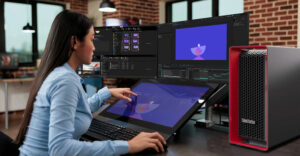
Samsung yesterday announced three new technologies targeted at the expanding, multi-faceted mobile application industry.
At a press conference held in Seoul, Dr. Chang-Gyu Hwang, Samsung’s semiconductor business president and CEO, introduced a 16 Gb NAND flash memory, a 7.2 Megapixel CMOS image sensor for high-end digital pictures, and fusion semiconductors for next-generation smartphones and PDAs, MP3 music players and subscriber identity module card applications.
“Consumers are looking for ever smaller, more stylish mobile devices,” said Hwang. “This poses a challenge for the semiconductor industry to create chips that meet the high-performance, high-density and minimum space requirements but don’t become a power drain.”
The Rise of NAND
NAND accounted for 55 percent of total worldwide flash-memory revenue in the second quarter of 2005, with NOR taking the remaining 45 percent, according to iSuppli Corp.
The overall flash-memory market, comprising both NAND- and NOR-type parts, grew to US$4.1 billion in the second quarter of 2005, up 4 percent from $3.9 billion in the first quarter and up 2.5 percent from $4 billion in the second quarter of 2004.
Samsung again was the dominant player in this area, controlling more than half of all NAND sales in the second quarter. The company accounted for 55 percent of NAND flash memory sales with revenue of $1.3 billion, up 4.2 percent from $1.2 billion in the first quarter.
Pushing the Market
Now, Samsung has developed the world’s highest density NAND flash — a 16 Gb multi-level cell (MLC) NAND memory. The 16 Gb NAND density was achieved with the industry first use of 50-nanometer technology directly applicable to mass production processes and by using Samsung’s proprietary 3D-transistor architecture. The finer geometry substantially reduces the noise level between cells and enables continued migration of storage platforms.
Brian Matus, vice president of market research at IC Insights, told TechNewsWorld that the 16 Gb NAND flash is a big step for Samsung, albeit maybe not a surprising one. The latest release further distances the company from Toshiba, its closest competitor.
“This shows the level of Samsung’s manufacturing and how much they are pushing and driving the NAND flash market,” Matus said. “Samsung has shown they are a very reliable, very capable manufacturer and that’s one of the reasons why Apple decided to use its parts for its new iPod, which was a significant score for Samsung.”
Pushing Innovation
Another example of Samsung’s innovation is its 7.2 Megapixel CMOS image sensor (CIS). It is designed to work with many different types of compact digital cameras.
Samsung said higher resolution CIS chips reflect an industry-wide attention on CIS technology as a promising new imaging technology as well as a feasible replacement of charge-coupled device, especially in mobile applications such as camera phones, digital still cameras and digital camcorders.
Finally, Samsung’s fusion semiconductor solutions provide space and power-sensitive packaging solutions for mobile applications. Fusion semiconductor solutions combine memory and system LSI semiconductor devices into a single solution.
“Samsung has a culture that drives innovation,” Matus said. “The company is beginning to have a vertically integrated market that helps other consumer segments like cameras, MP3 players, PDAs and anything else where flash memory might be used.”





















































